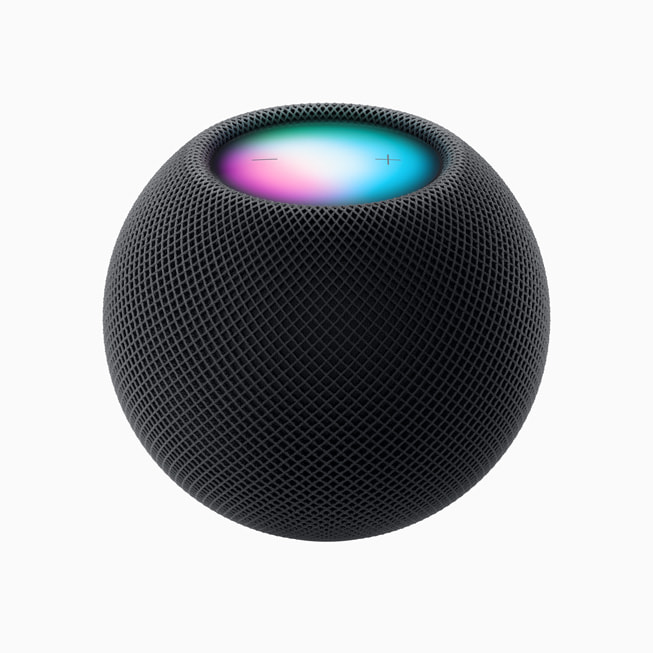The Quiet Evolution of Apple’s Smart Home Heartbeat
In the ever-shifting landscape of smart home technology, Apple’s HomePod mini has carved out a unique and resilient niche. While competitors focus on a rapid-fire release schedule of iterative hardware, Apple has taken a more measured approach, refining its compact smart speaker through powerful software updates. The recent subtle refresh of the HomePod mini lineup, including the introduction of a sleek Midnight black finish that aligns it with the broader Apple product family, has done more than just update a color palette. It has reignited a fervent discussion among tech enthusiasts and Apple loyalists alike: What is Apple’s next move in the smart speaker space? Is the continued focus on the mini a prelude to a more significant hardware launch, or a testament to the “if it ain’t broke, don’t fix it” philosophy? This article delves into the current state of the HomePod mini, analyzes the speculation surrounding a next-generation model, and explores its crucial role as the central nervous system of the modern Apple ecosystem.
Section 1: The HomePod mini in 2024 – A Compact Powerhouse Refined by Software
First released in late 2020, the HomePod mini remains Apple’s sole smart speaker offering after the discontinuation of its larger, bass-heavy predecessor. Its initial appeal was clear: impressive audio quality for its diminutive size, seamless integration for iPhone users, and a strong emphasis on privacy. However, its true value has been unlocked over time, primarily through significant advancements delivered via iOS updates news and dedicated HomePod software updates. This strategy has kept the aging hardware surprisingly relevant and capable.
Core Specifications and Enduring Features
At its heart, the HomePod mini is powered by the Apple S5 chip, the same processor found in the Apple Watch Series 5. This chip is the engine behind the device’s standout feature: computational audio. Unlike traditional speakers that simply push sound out, the HomePod mini analyzes the audio 180 times per second, optimizing loudness, adjusting the dynamic range, and controlling the movement of the driver and passive radiators in real-time. This results in a surprisingly rich and full sound profile that defies its physical dimensions.
Key hardware features that continue to define its utility include:
- U1 Ultra Wideband Chip: This allows for precise spatial awareness, enabling magical features like Handoff, where bringing an iPhone close to the HomePod mini seamlessly transfers music, podcasts, or phone calls.
- Thread Networking: The HomePod mini was one of the first mainstream devices to include Thread, a low-power mesh networking protocol that is a cornerstone of the new Matter smart home standard. This makes it a future-proof and highly reliable hub for a new generation of smart accessories.
- Temperature and Humidity Sensor: Initially dormant, this hardware was activated via a software update, transforming the HomePod mini into an environmental sensor that can trigger HomeKit automations, such as turning on a fan when a room reaches a certain temperature.
This software-first approach demonstrates Apple’s long-term vision. Instead of forcing users into a constant hardware upgrade cycle, the company enhances the value of existing devices, a strategy also seen across the latest iPhone news and iPad news. This builds user trust and deepens the device’s integration into daily life, solidifying its position not just as a speaker, but as an essential piece of smart home infrastructure, bolstered by Apple’s industry-leading commitment to Apple privacy news and iOS security news.
Section 2: Deconstructing the Next-Generation Rumors
The quiet refresh of the HomePod mini has fueled intense speculation. While the current model is competent, its 2020-era processor and audio architecture leave room for significant improvement. The community is buzzing with theories about what a “HomePod 3” or a “HomePod mini 2” could entail, drawing inspiration from advancements across Apple’s product lines.

Potential for a True Successor to the Original HomePod
Many audiophiles still mourn the original HomePod, which offered unparalleled audio fidelity in the smart speaker category thanks to its A8 chip, seven-tweeter array, and room-sensing spatial awareness. A next-generation full-size HomePod could build on this legacy with modern technology.
Key Speculations:
- Advanced Processor: A new model would likely feature a more modern S-series chip (like the S8 or S9 from recent Apple Watches) or even an A-series Bionic chip. This would unlock more advanced computational audio, potentially enabling real-time spatial audio adjustments that could create an even more immersive soundstage, a feature that would resonate with the latest AirPods Pro news.
- Dolby Atmos and Lossless Audio: While the current mini supports Lossless, a larger model could offer a more robust and room-filling Dolby Atmos experience, making it a true centerpiece for an Apple Music-centric listening room or a powerful companion for an Apple TV.
- Enhanced Beamforming: With more microphones and a faster processor, a new HomePod could offer even better “Hey Siri” detection and noise cancellation, a critical point of improvement highlighted in ongoing Siri news.
The “HomePod with a Screen” Concept
A persistent rumor suggests Apple is developing a device that merges the functionality of a HomePod, Apple TV, and a FaceTime camera, possibly with a screen mounted on a robotic arm. While this sounds futuristic, a more grounded version could be an iPad-like smart display for the home. This would be a direct competitor to the Amazon Echo Show and Google Nest Hub.
Real-World Scenario: The Kitchen Command Center
Imagine a HomePod with a 7- or 10-inch display in the kitchen. You could ask Siri to show you a recipe, watch content from Apple TV+ while cooking, conduct a FaceTime call with family, or view a live feed from your security cameras. It could also serve as a dynamic digital bulletin board or an interactive iPad vision board news-style family planner. This would transform the HomePod from a voice-first device to a visual, interactive hub for the entire home, creating a powerful new product category within the Apple ecosystem news.
Section 3: The HomePod’s Expanding Role in the Apple Ecosystem
Whether Apple releases new hardware or not, the HomePod mini’s importance within the ecosystem continues to grow. It is no longer just an accessory; for many, it is the indispensable core of their connected life, tying together entertainment, home automation, and communication.
The Smart Home Conductor and Matter
As a HomeKit Hub, the HomePod mini is the brain of an Apple-centric smart home. It processes automations locally, ensuring speed, reliability, and privacy. When you leave the house, it’s the HomePod mini that securely tells your lights to turn off and your thermostat to adjust. Its built-in Thread radio is its secret weapon. Thread allows devices to communicate directly with each other, creating a self-healing mesh network that is faster and more reliable than Wi-Fi or Bluetooth for smart accessories. This makes it a cornerstone for the new Matter standard, ensuring that a user’s investment in Apple accessories news will be compatible and robust for years to come.
A Seamless Multi-Room and Home Theater Audio Network
![HomePod mini Midnight - Apple HomePod mini [Midnight] — Assistive Tech](https://www.assistivetech.com.au/cdn/shop/files/homepod-mini-select-midnight-202407_FV1.png?v=1721109958&width=800)
The true power of HomePod mini is realized when you have more than one. Two HomePod minis can be set up as a stereo pair, creating a surprisingly wide and detailed soundstage for music. This pairing is especially potent when combined with an Apple TV 4K.
Case Study: The Affordable Dolby Atmos Setup
A user can pair two HomePod minis with their Apple TV 4K to create a default audio output system. This setup not only provides stereo separation but also supports Dolby Atmos spatial audio. While it won’t replace a high-end soundbar, it offers an immersive, room-filling audio experience for movies and shows that is far superior to a TV’s built-in speakers, all for a relatively low cost. This synergy is a key part of Apple TV marketing news, positioning the ecosystem as a cohesive entertainment solution.
Future Integration with Vision Pro
Looking ahead, the HomePod could play a fascinating role with Apple’s next major product category. As we follow Apple Vision Pro news, we can envision scenarios where a HomePod provides anchored, high-fidelity spatial audio that complements the visual experience of the headset. It could act as a processing offload for complex audio scenes or serve as a physical anchor point in a room for shared AR experiences. The potential for synergy between HomePod and future devices, perhaps even a rumored Vision Pro wand news-style controller, highlights its long-term strategic importance.
Section 4: Recommendations: To Buy, To Wait, or To Optimize?
With the landscape in flux, consumers are faced with a choice. Do you invest in the current HomePod mini, or hold out for a potential new model? The answer depends entirely on your needs and your current level of integration within the Apple ecosystem.

Reasons to Buy a HomePod mini Now
- Deep Apple Ecosystem Integration: If you use an iPhone, Apple Music, and are interested in HomeKit, the HomePod mini is an unparalleled value. Its seamless setup and operation are significant advantages.
- Excellent Smart Home Hub: It is arguably the best entry point into the world of Matter and Thread. If your primary goal is building a reliable smart home, it’s a top-tier choice.
- Affordable, High-Quality Audio: For its price and size, the sound quality is exceptional. A stereo pair offers a fantastic listening experience for under $200.
Reasons to Wait
- Siri’s Limitations: If you demand a highly advanced, conversational AI assistant, Siri still lags behind Google Assistant and Alexa in some areas. Future hardware could bring on-device processing that dramatically improves this.
- You Crave High-Fidelity Bass: The mini, for all its computational magic, is still a small speaker. It cannot replicate the deep, powerful bass of the original HomePod or other larger speakers. If audio quality is your absolute priority, it may be worth waiting to see if Apple releases a larger model.
- The Lure of a “Next Big Thing”: If you are an early adopter who wants the latest and greatest, the persistent rumors of a new model with a screen or significantly improved audio might be reason enough to hold off.
Best Practices for Current Owners
If you already own one or more HomePod minis, ensure you’re getting the most out of them. Regularly check for software updates, experiment with HomeKit automations using the temperature sensor, and consider creating a stereo pair for your primary music listening area or with your Apple TV. Explore the Intercom feature to communicate with family members across the house, turning your Apple devices into a cohesive communication network.
Conclusion: The Patient Game of a Tech Giant
The HomePod mini’s journey is a masterclass in Apple’s long-term product strategy. It’s a device that has grown more capable and valuable with each passing year, not through flashy hardware revisions, but through thoughtful and powerful software enhancements. The recent color refresh serves as a quiet reminder of its continued relevance and has successfully stirred anticipation for what’s next. While the current HomePod mini remains an excellent purchase for anyone embedded in the Apple ecosystem, the horizon is filled with exciting possibilities. Whether Apple unveils a true successor to the original HomePod, a revolutionary smart display, or simply a more powerful mini, one thing is clear: the small, unassuming sphere is central to Apple’s ambitious vision for a seamlessly connected, intelligent, and private home. The ongoing HomePod mini news is less about a single product and more about the patient, deliberate orchestration of an entire ecosystem.











